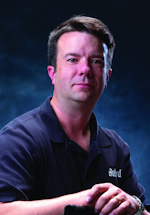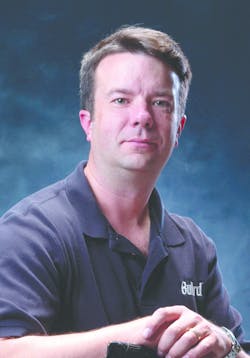Thermal Imaging: Company-Level Hazmat Response and Training
I’ve never really understood hazardous materials technicians. If you can put “colorless,” “odorless,” “tasteless” and “fatal” in the same sentence, I am not all that interested. My error rate is way too high. I admire those who want to take on this responsibility. The technical knowledge and extensive training require a special type of person.
Luckily, in my neck of the woods, all we really need to know at the company level is that we have a hazmat incident. Once we know that, we maintain a safe perimeter, contain the incident and wait for a regional hazmat team to come in to take care of the situation – and I am more than OK with this arrangement!
With all of that being said, thermal imagers can be handy in hazmat incidents. In this column, we will look at a few of those situations, identify how a thermal imager could be helpful and how you can train with it.
Hazmat identification
Practicing hazmat response can be difficult; however, there are a few simulations you can perform in your firehouse with common foodstuffs. Fill the kitchen sink with warm water, then pour a small amount of cooking oil into the water and watch it with a thermal imager. You should see two distinctly colored areas in the water showing the relative surface temperatures and determining the presence and flow of a material. For easier training, make the temperature difference significant to decrease the difficulty of identifying the product. For more difficult training, try to make the water and oil temperatures closer to increase the difficulty of identifying the product.
After everyone has seen how lighter-than-water materials appear on the water’s surface, refill the sink and pour milk or juice into it. This gives firefighters the opportunity to see how miscible or heavy materials rapidly disappear from the view of the thermal imager. The effects of water can be reinforced as well by having one member immerse his hand in the sink, while the rest view it on the thermal imager.
If the chemical has a specific gravity of less than 1, it will float. If it is a polar solvent, it will mix and be nearly invisible. If it has a specific gravity greater than 1, it will sink and the thermal imager will offer no assistance, as evidenced by the hand placed under water described above.
Hazmat and “emissivity”
To most firefighters, “emissivity” is a foreign concept. Briefly, emissivity is the notion that all materials absorb heat and release heat at different rates. Emissivity affects how materials appear on your thermal imager.
To see the effect of emissivity on a thermal image, partially fill several containers with water. The containers should be made of different materials, such as plastic, glass and aluminum. Ask firefighters to view product levels in the containers by scanning them with a thermal imager. This exercise shows how certain materials may hide heat differences better than other materials.
Next, place cold, warm and hot water in different containers to demonstrate which materials show product levels the best. To keep crewmembers on their toes, occasionally challenge them with an empty container to emphasize that firefighters cannot fool themselves into seeing product levels when none are present.
If you have a Thermos, try filling it with very hot water. Of course, it will be invisible to the thermal imager, but you can use this to reinforce the fact that insulated containers will not show a product-level line. By extension, what kind of chemicals would one suspect transport in thermally insulated containers? Does that change the hazmat response guidebook minimum evacuation distance?
Under certain conditions, a thermal imager can help you identify a leaking container or the source of a leak. To help firefighters practice, fill several containers with water and place them in a row. Make pinhole leaks in a container to add realism. Perform the drill in low-light conditions to force firefighters to rely on the thermal imager more than their eyes, aiding their image-interpretation skills.
While a thermal imager will not see leaking gases, it will identify a container that is cooler because it is leaking. If it is easy for you to refill self-contained breathing apparatus (SCBA) cylinders, place two or three next to each other. Carefully release about a quarter of the air from one and then ask a firefighter to determine which cylinder was leaking.
Temperature measurement
While temperature measurement can be accurate when viewing common construction materials, it can be extremely inaccurate when viewing reflective materials, such as metals. To demonstrate why firefighters cannot make critical decisions based on an indicated temperature, fill a shiny aluminum or steel pot with water, place it on the stove and bring it to a boil. Then walk firefighters carefully through the following questions:
• What is the temperature of boiling water? (Answer, 212°F or 100°C)
• If the pot contains boiling water, what is the minimum temperature of the pot? (Answer, 212°F or 100°C, although it is likely much higher)
• Look at the pot with the thermal imager and take a temperature reading from near the bottom of the pot. It will probably read about 100°F or 39°C.
• Can you put your hand in boiling water? (Answer, no – not if you like your hand)
• Can you put your hand in 100°F (39°C) water? (Answer, yes, it is similar to a hot tub)
This is the easiest way to demonstrate clearly how temperature-measurement devices can lead firefighters to make poor decisions. Everyone who uses a thermal imager with temperature measurement must understand that the reading cannot be used to make life-or-death decisions.
Conclusion
You cannot expect to take your thermal imager out once a month and be comfortable with image interpretation. Image interpretation requires regular practice.
By regularly practicing with the thermal imager in and around the firehouse, you can improve your image-interpretation skills and keep them honed for emergency incidents. Practice also reinforces to your firefighters that the thermal imager is a valuable tool with many uses. These simple drills and your own creative adaptations of these simple drills can give your firefighters additional practice understanding thermal images.
BRAD HARVEY is the Thermal Imaging Product Manager at Bullard. He is a veteran of public safety as a firefighter, police officer and paramedic and is certified through the Law Enforcement Thermographers’ Association (LETA) as a thermal imaging instructor. Harvey has worked as a high-angle rescue instructor and is a certified rescue technician and fire instructor. If you have questions about thermal imaging, you may email him at [email protected].

Brad Harvey
BRAD HARVEY is the Thermal Imaging Product Manager at Bullard. He is a veteran of public safety as a firefighter, police officer and paramedic and is certified through the Law Enforcement Thermographers’ Association (LETA) as a thermal imaging instructor. Harvey has worked as a high-angle rescue instructor and is a certified rescue technician and fire instructor. If you have questions about thermal imaging, you may e-mail him at [email protected].






